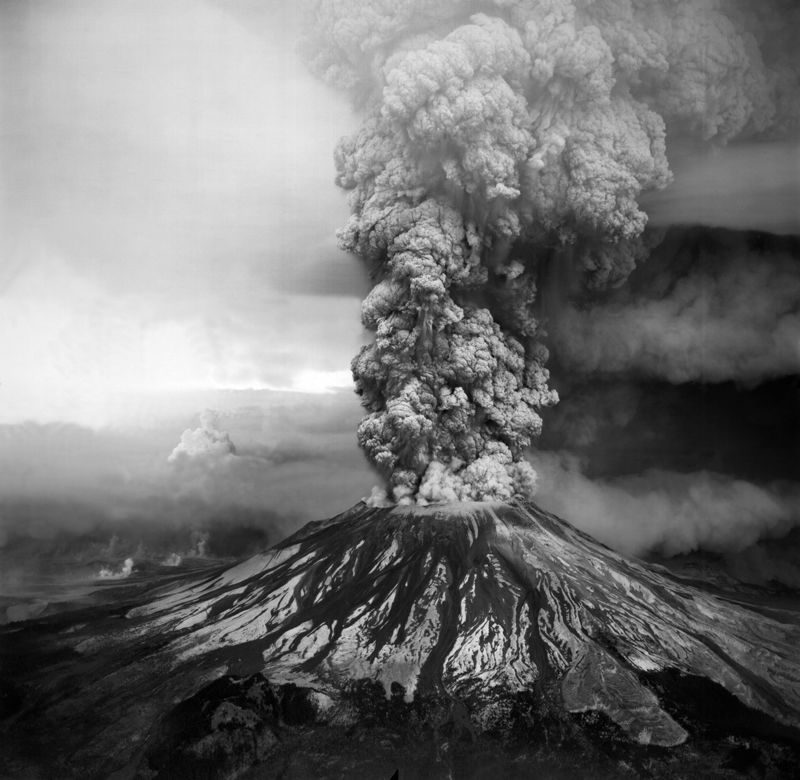The devastating Indian Ocean tsunami of 2004 and the Tōhoku earthquake in Japan in 2011 highlighted some of the worst-case scenarios for natural disasters. But humanity has not had to deal with a cataclysmic volcanic disaster since at least 1815, when the eruption of Tambora in Indonesia killed tens of thousands of people and led to a 'year without a summer' in Europe and North America. Such world-altering blasts rank at 7 or more on the Volcanic Explosivity Index (VEI) scale of eruptions, which goes to 8.
"The next VEI-7 eruption could occur within our lifetimes, or it could be hundreds of years down the road," says Chris Newhall, a volcanologist with the Mirisbiris Garden and Nature Center in Santo Domingo, Philippines. But the time to have this discussion is now, he says, so that researchers and government officials can plan and prepare before an emergency strikes.
Comment: Or it could be just around the corner:
- Volcanoes are erupting all over the place right now. Scientists have figured out why: A minute slowdown in the planet's rotation
- Scientists predict upsurge in major earthquakes for 2018 due to slowdown in Earth's rotation
Newhall is the lead author of a paper published last week in Geosphere1 that explores the potential consequences of the next VEI-7 eruption. His co-authors are volcanologist Stephen Self of the University of California, Berkeley - with whom Newhall devised the VEI scale2 in 1982 - and Alan Robock, a climate scientist at Rutgers University in New Brunswick, New Jersey. All three have researched the VEI-5 eruption of Mount St Helens in Washington state in 1980, and the VEI-6 eruption of Mount Pinatubo in the Philippines in 1991.
Comment: Yellowstone: 200 quakes in just 10 days after warning that magma is causing strain on the surface
Those events killed dozens to hundreds of people and disrupted entire regions. Pinatubo even spewed enough sulfur dioxide into the stratosphere to cause global cooling. But a VEI-7 eruption would be of an entirely different scale. In 1257, a VEI-7 eruption in what is now Indonesia probably cooled the planet down enough to kick off a centuries-long cold snap called the Little Ice Age, Robock says. "These things are hugely important for the planet, but the next one will take place in quite a different environment," he adds.
Comment: Ice ages occur cyclically on our planet:
A globalized world
Agriculture, health care, financial systems and other aspects of modern life are much more globally interconnected than they were just a few decades ago, the scientists say. Eight years ago, an eruption that ranked at just VEI 3 - Eyjafjallajökull, in Iceland - grounded European air traffic for days because of the danger of flying through volcanic ash. The event caused an estimated US$5 billion in economic losses.
Newhall's team says that researchers should start to prepare for a VEI-7 eruption by studying potential effects on crucial communications links - such as how atmospheric moisture and volcanic ash can interfere with global positioning system signals. Others could work to improve their understanding of how large amounts of magma accumulate and erupt, helping scientists to forecast where the next VEI-7 event might occur.
The researchers already have a long list of candidate volcanoes that might be capable of a VEI-7 blast. They include Taupo in New Zealand, site of the world's last VEI-8 eruption - 26,500 years ago - and Iran's Mount Damavand, which lies just 50 kilometres from Tehran.
Preparing for rare but deadly eruptions is as important as dealing with smaller, more-frequent ones, says Janine Krippner, a volcanologist at Concord University in Athens, West Virginia. "Even with the lower probability of these larger events, when they do occur people will look to scientists, emergency managers, governments and other entities and expect them to be prepared," she says. "We owe it to our communities to be researching potentially devastating eruptions, so we can guide people on what to do."




Comment: See Also: